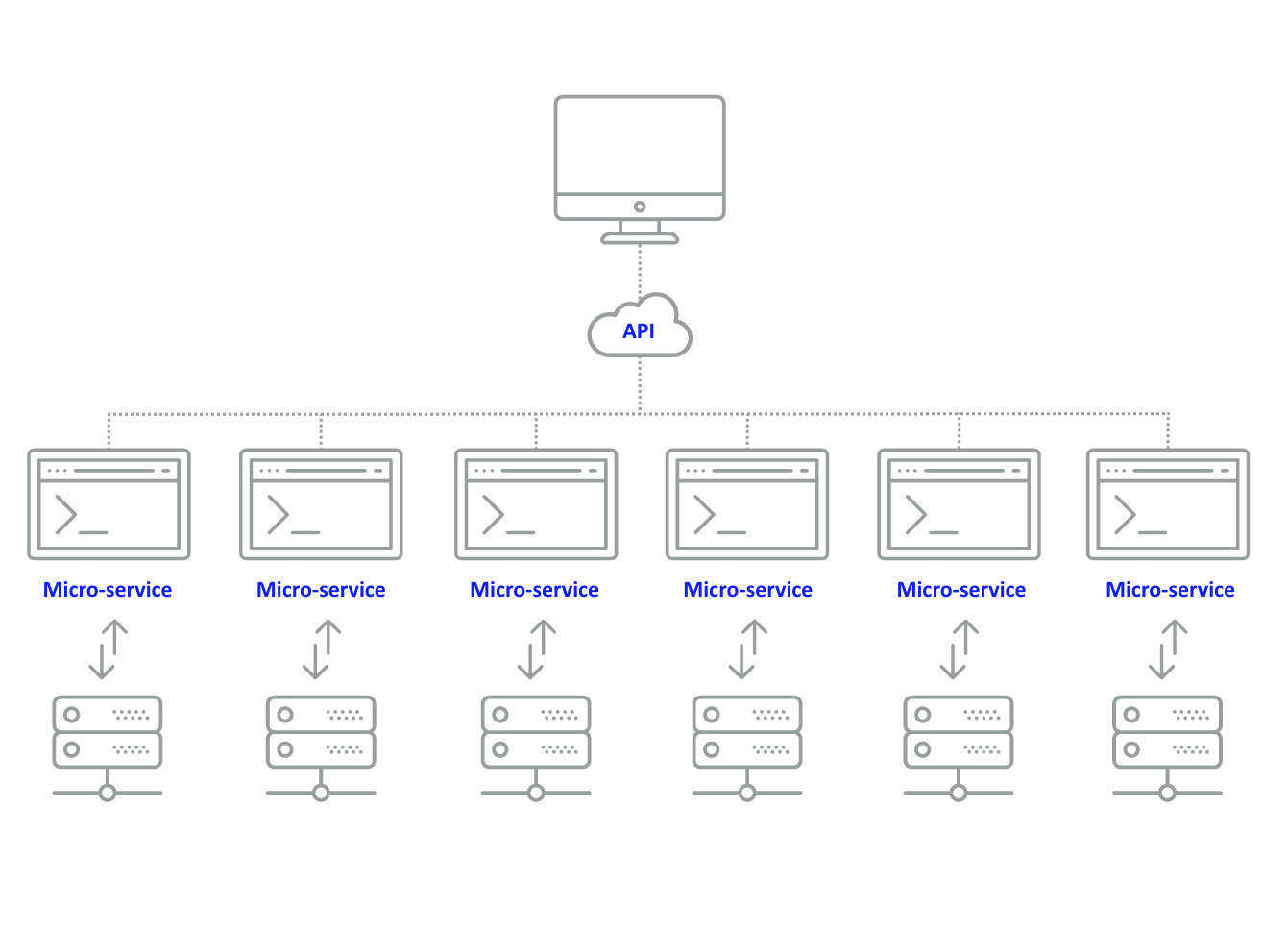Solutions
Micro-service Strategy
Micro-services transcends traditional monolithic architectures into dynamic and scalable environments, providing a modular framework, laying the foundation for stable and agile growth in the ever-evolving landscape of software development.

With the rapid pace of technological advancements, businesses need dynamic and scalable software architectures that can handle the challenges of today and the future. Micro-services represent a paradigm shift in software development that provides a modular framework for stable and agile growth.
We help businesses leverage this powerful approach to software development. By breaking down complex applications into smaller, self-contained units, micro-services enable developers to iterate and deploy with ease, resulting in a more responsive and resilient system.
To create a successful micro-service strategy, we work closely with you to identify your business requirements and decompose your monolithic architecture into micro-services. We then use our expertise to identify the right micro-services, plan for scalability, design APIs and contracts, select the appropriate technology stack, manage data, ensure security and compliance, and implement monitoring, logging, testing, and documentation.
Our goal is to build a customised and scalable micro-service system that serves as the foundation for sustainable and agile growth, enabling your business to stay ahead of the curve and compete effectively in fast-paced and demanding environments.
The first step in developing a micro-service strategy is to define clear and specific business requirements. This involves understanding the business objectives, identifying key functionalities, and prioritising features based on business value. By aligning the micro-service architecture with business goals, we can help you to ensure that the system and release schedule meets the commercial demands.
If transitioning from a monolithic architecture, decomposing the existing monolith into smaller, independent services is essential. This process involves identifying cohesive components within the monolith and breaking them down into separate micro-services. Decomposition should be guided by principles such as single responsibility, high cohesion, and loose coupling to ensure the scalability and maintainability of the micro-service architecture.
Once the monolithic architecture is decomposed, the next step is to identify individual micro-services based on functional boundaries. Each micro-service should encapsulate a specific business capability or feature, allowing it to be developed, deployed, and scaled independently. Identifying micro-services requires careful consideration of factors such as business logic, data dependencies, and service boundaries.
Planning for scalability is essential to ensure that the micro-service architecture can handle growing workloads and user demands. This involves designing scalable architectures, implementing horizontal scaling techniques, and utilising cloud-native technologies for elastic scalability. By anticipating scalability requirements upfront, we can help you avoid performance bottlenecks and ensure seamless stability as the system grows.
Micro-services communicate with each other through well-defined APIs. Establishing clear API definitions and processes ensures interoperability between services and promotes loose coupling. API design should prioritise simplicity, flexibility, and consistency to facilitate integration and minimise dependencies between micro-services.
Selecting the appropriate technology stack is crucial for the success of a micro-service architecture. This includes choosing programming languages, frameworks, databases, and other tools that align with the project requirements and business capabilities. Considerations such as developer expertise, community support, and ecosystem maturity should inform technology stack decisions to ensure long-term maintainability and scalability.
Effective data management is essential for maintaining data consistency, integrity, and availability in a micro-service architecture. This involves choosing the right data storage solutions, implementing data replication and synchronisation mechanisms, and establishing data governance policies. Each micro-service should have its own database or data store, and data access should be restricted to prevent unauthorised access and ensure compliance with data privacy regulations.
Security and compliance considerations are paramount when designing and implementing a micro-service architecture. This includes implementing robust authentication and authorisation mechanisms, encrypting sensitive data in transit and at rest, and implementing secure coding practices. Additionally, we can help you ensure compliance with relevant regulations and standards, protect sensitive data, and mitigate legal risks.
Monitoring and logging are critical for maintaining the health, performance, and reliability of a micro-service architecture. This involves instrumenting micro-services with monitoring tools and logging frameworks to track key metrics such as response times, error rates, and resource utilisation. Real-time monitoring and centralised logging enable us to identify and troubleshoot issues quickly, ensuring high availability and performance.
Implementing comprehensive testing strategies is essential for validating the functionality, reliability, and performance of micro-services. This includes unit testing, integration testing, end-to-end testing, and performance testing to verify the behavior of individual services and their interactions. Additionally, we can help implement continuous integration and continuous deployment (CI/CD) pipelines to automate testing and deployment processes, ensuring rapid and reliable delivery of updates and improvements.
Documentation is critical for facilitating understanding, collaboration, and maintenance of a micro-service architecture. This includes documenting API specifications, service contracts, deployment procedures, and troubleshooting guides. Clear and comprehensive documentation enables developers, operations teams, and other stakeholders to understand how micro-services work, how they interact with each other, and how to troubleshoot issues effectively.

Case Study
Citrus Training
We helped support Citrus Training with their two-year digital transformation journey, helping them to revamping their commercial, operational, and technical infrastructure. This included developing a scalable micro-service architecture and an API for integration and automation, implementing a CRM, and introducing marketing automation.

